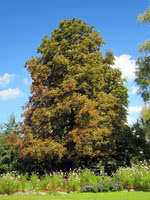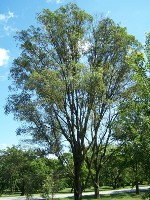Mon-Fri 9am - 5pm Mountain time
Horse Chestnut vs Siberian Elm
Aesculus hippocastanum
Ulmus pumila
CUSTOM GROW
PRODUCTION CANCELLED
Horse Chestnut is a medium sized deciduous tree that is native to Greece but has been grown in North America for hundreds of years. It produces large nuts.
A top CO2 absorbing species. Experts think this tree may help climate change more than others.
Siberian Elm is a small to medium-sized deciduous tree. It has a similar form to American Elm, but smaller, with a more pyramidal habit and shorter lifespan. It is also more resistant to Dutch Elm disease and is very salt tolerant.
Siberian Elm was grown as shelterbelts in the prairies after the Dustbowl disasters, where its rapid growth and tolerance for drought and cold initially made it a great success. It is an excellent shade tree.
Note: Due to it's increasingly controversial reputation for being invasive in warmer climates, we are no longer planning to grow this species for retail purchase on a regular basis.
Horse Chestnut Quick Facts
Siberian Elm Quick Facts
Toxicity: most parts of plant are toxic
In row spacing: 2.4 - 3 m (8 - 10 ft)

